CRGC Fellows
The theme of the 2025-2027 Seminar Fellowship is "Global Catholicism in Local Spaces." Fellows are engaged in projects related to the polycentric features of global Catholicism and their manifestations in local physical spaces.
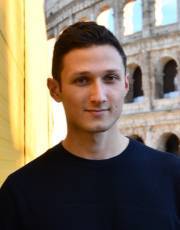
Florian Ambach
Project Title: "Capuchin Missions in the Atlantic World: Missionary Spaces, Slave Routes, and Contested Geographies (1645-1835)"
Between 1645 and 1835, Capuchin missionaries in West Central Africa operated at the intersection of evangelization and enslavement, navigating a world where faith, commerce, and coercion were deeply intertwined. After perilous Atlantic crossings, they established missions in coastal towns and inland regions of Kongo, Ndongo and Matamba, where they not only witnessed but at times facilitated the transatlantic slave trade. Their letters and reports convey a tension between moral condemnation of human bondage and pragmatic involvement in ransoms, baptisms, and labor disputes — practices that entangled them in the very system they sought to critique. Mission compounds, slave markets, barracoons and shipboard holds appear as contested spaces in which friars extended spiritual aid to captives even as they upheld colonial hierarchies. Drawing on spatial history, this study analyzes Capuchin missions as multifunctional sites of coercion, negotiation and resistance, illuminating the contradictions of Catholic missions within the violent structures of Atlantic slavery.

Min Ah Cho
Project Title: "Sacred Streets: Korean Catholic Street Masses and the Sewol Ferry Disaster - Eucharist Space as Political Mourning"
This research explores how Korean Catholic Street Masses (거리 미사) have created sacred-political spaces by combining Eucharistic ritual with public mourning, especially in response to the 2014 Sewol Ferry disaster. Drawing on Michel de Certeau’s theory of spatial practice and Judith Butler’s politics of mourning, the study analyzes how these masses transformed state-controlled spaces like Gwanghwamun Square into sites of resistance and communal grief. The Eucharist — both as a symbol of Christ’s broken body and as a real presence — became a medium through which the lost lives of victims were publicly remembered and honored. These masses redefined mourning as political witness, challenging official narratives and forging new mourning communities. The project contributes to broader discussions on religious ritual as resistance, lived religion in Asia, and how traditional Catholic practices can address social trauma. Ultimately, it proposes Eucharistic practice as a form of spatial resistance and a powerful expression of political theology in contemporary Korean Catholicism.
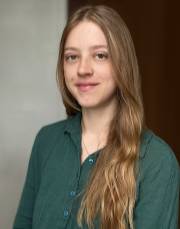
Xena Fitzgerald
Project Title: "Theatrical Objects: Material Culture of Jesuit Spectacle in the Viceroyalty of Peru"
Xena’s dissertation examines Jesuit festivity and spectacle in the Viceroyalty of Peru from the arrival of the Society of Jesus in 1568 through the following century. Employing an art historical approach, it surveys a range of artistic media — including costume, sculpture, ephemeral architecture and fireworks — that operated at the intersections of visual art, devotion and public performance. The project contextualizes how Jesuits and their Indigenous collaborators mobilized objects and media across diverse settings, including Jesuit colleges, confraternal chapels, city streets and plazas. By investigating how Jesuits orchestrated the movement of objects and people during religious celebrations and festivities, her research furthers the understanding of the expansion of Catholicism as advanced by the Society of Jesus across the Viceroyalty of Peru.
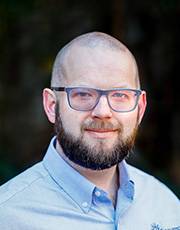
Brent Gordon, S.J.
Project Title: "Porters, Architects, Helpers: The Development of Jesuit Temporal Coadjutors in the Early Modern World"
As with the Jesuits as a whole, the place and work of the temporal coadjutors (Jesuit laybrothers) in the mission territories of Asia and the Americas reflected the needs and political motivations of the involved European powers as well as the realities of the cultures in which they worked. The speed of institutionalization and the geographic diversity of missions meant that, for the nascent Society of Jesus, attempts at codification took place at the same time as local situations required adaptation. This project explores the ways in which the model of coadjutor presented in the normative documents of the Society of Jesus composed in the mid-16th century shifted to accommodate on-the-ground realities in the missions, such as those in Mexico and Canada, in the late 16th through the 17th centuries.
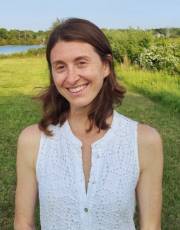
Graylin Harrison
Project Title: "Death, Art, and the Landscape in Early Modern Naples"
This book project, the first monographic study of early modern Neapolitan death culture and its global reach (ca. 1500-1800), probes the nexus of art and architecture, environmental history, and religiosity to articulate what social scientists have called a “deathscape.” Early chapters consider the visual culture of individual death, examining local ars Moriendi, tombs, and ritual objects to clarify their role in the subject’s quest for post-mortem redemption. Subsequent chapters shift from the individual to collective, arguing that volcanism inspired a topography of the afterlife that transformed how churches were built and decorated, where the dead were buried, and how the public commemorated them through art and ritual. With Naples as its primary case study, paired with comparanda from Spain, the Netherlands, and Peru, this book explores how landscape redefined popular Catholicism and the art, architecture, and material culture that sustained it.
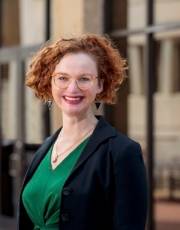
Rebecca Janzen
Project Title: "Mining Religion: Religious Sites and Extractive Industries Across the Americas"
Mining Religion is a single-authored monograph that examines the complex relationship between Catholic religious devotion in churches and shrines near mines across the Americas. It would enrich — and benefit from — conversation with doctoral students and other researchers in the seminar. The project examines religious sites in Cuba, Brazil, Bolivia and Mexico in order to understand the meaning of religious sites located near mines, reflecting on the ways that religious ideas can be used both to justify and to criticize the mining industry’s dangerous working conditions and its environmental destruction. In this way, Mining Religion’s analysis of archival documents, church buildings and other religious spaces forms the basis of a broader framework of these religious sites.
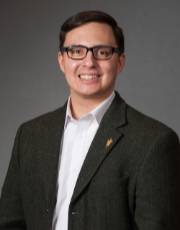
Joshua Madrid
Project Title: "Finding God Behind the Wire: Constructing Space for Religion in Prisoner of War Camps during the Second World War"
This project aims to construct a transnational history of Catholicism in Prisoner of War (POW) camps during the Second World War. In Europe, these camps provided a unique unconsidered local space in which Catholics of varying nationalities and cultures came into contact with one another. Consequently, these spaces offer crucial insight into the dynamics of religious and national identity along with the impact war has on global institutions like the Catholic Church. This project considers how Catholic POWs came to engage with and relate to their captors, and co-prisoners of the same denomination. It will expand upon current historiography by giving a stronger consideration to the religious spaces and their impact on shaping wartime experience of Catholic communities in armed service.
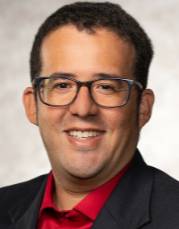
Guillermo Pupo Pernet
Project Title: “Mapping the Orinoco Region: Bastón de Mando”
This project examines the bastón de mando, a ceremonial staff used by Indigenous communities, as a material object central to the transformation of authority and space during 18th-century Catholic missionization in the Orinoco River region. Traditionally employed to signal leadership and territorial claims, the bastón de mando was adopted by Jesuit missionaries and Spanish officials to establish hierarchies among Indigenous leaders in newly formed Pueblos de Indios. Joseph Gumilla’s writings provide detailed accounts of how these staffs were used to integrate Carib and Saliva political structures into colonial governance. While missionaries repurposed them to reinforce administrative control and religious authority, their meaning cannot be understood entirely through a European framework. The bastón de mando retained its cultural significance rooted in Indigenous traditions, and its use in colonial contexts reflects the ongoing negotiation between imposed systems and existing Indigenous forms of power. By analyzing missionary writings, travel narratives, and visual sources, this project demonstrates how Indigenous material culture shaped the spatial and political logic of mission settlements and contributes to broader discussions of colonial sovereignty, religious space and cross-cultural mediation in early modern Latin America.
Cohort 2024-2025
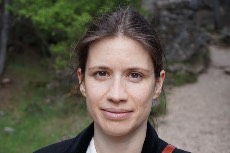
Cloe Cavero is a specialist in early modern art and visual culture, focusing on Spain, Italy and Latin America. After receiving her Ph.D., from the European University Institute in Florence, Italy, she was a postdoctoral researcher at the Ludwig-Maximilians-Universität in Munich and a lecturer at the Universidad Autónoma de Madrid. Her research has appeared in the Journal of the Warburg and Courtauld Institutes, Print Quarterly, and the Bulletin of Spanish Studies, among others. Her current book project traces the post-Tridentine revival of the images and cults of child martyrs in the early modern Iberian world. By examining complex artworks by painters such as Francisco de Zurbarán and Cristóbal de Villalpando alongside humble representations in far-flung local shrines, and the circulation of prints between Manila, Madrid and Mexico, this project unveils the centrality and creativity of Hispanic visual culture in the age of colonial expansion and Catholic evangelization.

Matthew Elia is assistant professor of theology, race and environment at Saint Louis University. His first book, "The Problem of the Christian Master: Augustine in the Afterlife of Slavery," is forthcoming with Yale University Press. He earned his Ph.D., in the Graduate Program of Religion at Duke University, supported by an ACLS/Mellon Dissertation Fellowship. He is working on a second book on climate justice, race and migration, tentatively titled "We Are Each Other's Harvest: Solidarity at the End of the World."
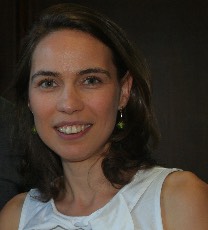
Gabrielle Guillerm is an associate professor of American history at Sorbonne Université in Paris. She specializes in the intersection of Catholicism and white supremacy in the United States. Her current book project examines how French missionaries helped entrench white supremacy in the American West in the decades following the American and French revolutions. From September 2022 to June 2024 she worked as the research coordinator for truth and healing at Mahpíya Lùta (Red Cloud School). Led by the Oglala Lakota people of the Pine Ridge Reservation in South Dakota, this Truth and Healing project seeks to confront the history of this former Jesuit boarding school for Lakota children.
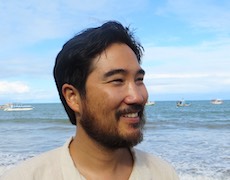
Michael Iyanaga is the John & Audrey Leslie Associate Professor of Music and Latin American Studies at William & Mary. Iyanaga's historical and ethnographic work is largely concerned with studying Catholic saint devotional practices in Brazil and the Atlantic world from the 15th to the 21st centuries.
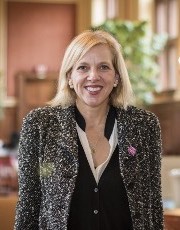
Stephanie Kirk is director of the Center for the Humanities and Professor of Hispanic Studies at Washington University in St. Louis, where she also holds affiliate appointments in Religious Studies and Women, Gender, and Sexuality Studies. A specialist in gender and Catholicism in colonial Latin America, she is the author of two books, two edited volumes, and numerous articles and essays. She is working on her third monograph, "Bodies as Books: Early Modern Jesuit Writings on Global Martyrdom." Additionally, she is engaged in a translation and scholarly edition of Carlos de Sigüenza y Góngora's 17th-century chronicle of convent life in Mexico City, "Western Paradise."
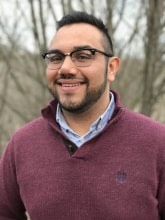
Carlos Ruiz Martinez is a Ph.D., student in the Department of Religious Studies at the University of Iowa. Carlos is broadly interested in how the category of religion has been defined and redefined across different historical and social contexts. His dissertation explores how federal immigration agencies in the United States have engaged the category of religion and its actors as a means to control the flow of immigrants near the U.S.-Mexico border. In the 1980s, federal immigration agencies criminalized people of faith who were seeking to provide refuge to Central American immigrants who crossed the Southern border irregularly. Today, federal agencies work closely and intentionally with faith-based migrant shelters near the border. Carlos' dissertation explores this shift, as well as the relationship between church, state, and migration in the U.S.-Mexico borderlands.
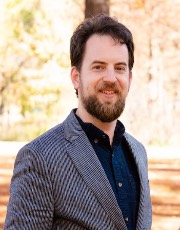
Thomas Morin is a sixth-year Ph.D., candidate in the Department of History at Saint Louis University. Tom's interests include Italy and the Crusades from the 12th through the 14th centuries. His research utilizes chronicles and archival sources to analyze social, political, and cultural interactions in the context of crusading and maritime theft in the Mediterranean. The title of his dissertation is "Blood on the Page: Genoa, the Latin East, and Competing Narrative Traditions in the Medieval Mediterranean," 1099-1409. Before his time at SLU, Tom achieved the rank of captain in the U.S. Army.
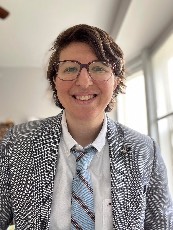
Darby Ratliff is a Ph.D. candidate in the Department of American Studies at Saint Louis University and holds a Pre-Doctoral Public Humanities Fellowship in partnership with the Missouri Historical Society. Darby's dissertation focuses on the intersecting histories of Catholic education in the 19th century, looking specifically at schools for white and indigenous children along the upper Mississippi region.
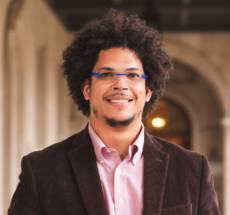
Miguel A. Valerio is assistant professor of Spanish at Washington University in St. Louis. Miguel is a scholar of the African diaspora in the Iberian world. His research has focused on Black Catholic brotherhoods or confraternities and Afro-creole festive practices in colonial Latin America, especially Mexico and Brazil. He is author of Sovereign Joy: Afro-Mexican Kings and Queens, 1539-1640 (Cambridge University Press, 2022) and a co-editor of Indigenous and Black Confraternities in Colonial Latin America: Negotiating Status through Religious Practices (Amsterdam University Press, 2022). He is working on his second book, Architects of Their World: The Artistic and Ritualistic Spaces of Afro-Brazilian Brotherhoods (under contract with Cambridge University Press). His research has appeared in various academic journals, including Slavery and Abolition, Colonial Latin American Review, The Americas, the Journal of Festive Studies, and Latin American Research Review.
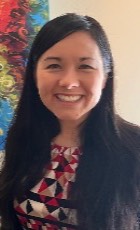
Stephanie Wong is an assistant professor at Villanova University in the Department of Theology and Religious Studies, where she teaches Catholic theology and East Asian traditions. Her scholarly work focuses on Chinese Catholicism and is both interreligious and transnational in focus. She is interested in how Chinese Catholics have reckoned intellectually and spiritually with Buddhist, Confucian, Daoist and Communist visions in their local milieu, analyzing how Catholic theology has developed in East Asia through a contextual and comparative lens. Wong is also interested in the geopolitical dynamics of lived Catholicism, especially as Chinese Catholic communities span different languages, geographies, and generations across and beyond the sinosphere. Before starting at Villanova, Stephanie taught at Valparaiso University and studied at Georgetown University (Ph.D.), Yale University (m.Div.) and Washington University in St. Louis (B.A.). She has been involved in a range of social scientific, ecclesial, theological, and community-building efforts, such as participating in a Yale-CUHK study of religious communities in Hong Kong, the Vatican's network of Women Building a Culture of Encounter interreligious dialogue group, co-leading the American Academy of Religion's Chinese Christianities Group and the Catholic Theological Society of America's comparative Theology Group, and serving on the board of Interfaith Philadelphia.

















